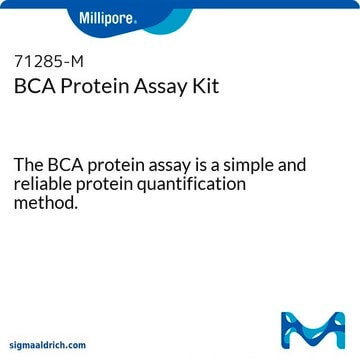R1756
Rhodanese from bovine liver
Type II, essentially salt-free, lyophilized powder, 100-300 units/mg solid
Synonym(s):
Thiosulfate Sulfur Transferase, Thiosulfate:cyanide sulfurtransferase
Sign Into View Organizational & Contract Pricing
All Photos(1)
About This Item
CAS Number:
MDL number:
UNSPSC Code:
12352204
NACRES:
NA.54
Recommended Products
type
Type II
form
essentially salt-free, lyophilized powder
specific activity
100-300 units/mg solid
storage temp.
−20°C
Looking for similar products? Visit Product Comparison Guide
Application
Rhodanese (RHOD) is an enzyme that converts cyanide to thiocyanate. RHOD may be useful in ulcerative colitis (UC) research as it has been shown to have detoxifying properties in the colon . Rhodanese is used to study sulfur energy metabolism .
Biochem/physiol Actions
Rhodanese (RHOD) is the principal enzyme involved in hydrogen sulphide (H2S) detoxication in the colonic luman .
Unit Definition
One unit will convert 1.0 μmole of cyanide to thiocyanate per min at pH 8.6 at 25°C.
Storage Class Code
11 - Combustible Solids
WGK
WGK 3
Flash Point(F)
Not applicable
Flash Point(C)
Not applicable
Personal Protective Equipment
dust mask type N95 (US), Eyeshields, Gloves
Choose from one of the most recent versions:
Certificates of Analysis (COA)
Lot/Batch Number
Don't see the Right Version?
If you require a particular version, you can look up a specific certificate by the Lot or Batch number.
Already Own This Product?
Find documentation for the products that you have recently purchased in the Document Library.
Rui Qiu et al.
Protein and peptide letters, 19(11), 1139-1143 (2012-05-17)
Yeast tRNA-thiouridine modification protein 1 (Tum1) plays essential role in the sulfur transfer process of Urm1 system, which in turn is involved in many important cellular processes. In the rhodanese-like domain (RLD), conserved cysteine residue is proved to be the
Vicky De Preter et al.
Inflammatory bowel diseases, 18(12), 2371-2380 (2012-03-22)
Defective detoxification of sulfides leads to damage to the mucosa and may play a role in the etiology of ulcerative colitis (UC). The colonic mucosal thiosulfate sulfurtransferase (TST) enzyme removes H(2) S by conversion to the less toxic thiocyanate. In
Liming Luo et al.
Plant molecular biology, 79(4-5), 495-508 (2012-05-31)
Rhodanese-domain proteins (RDPs) are widespread in plants and other organisms, but their biological roles are mostly unknown. Here we report on a novel RDP from Chlamydomonas that has a single rhodanese domain, and a predicted chloroplast transit peptide. The protein
Assylay Kurmanbayeva et al.
Methods in molecular biology (Clifton, N.J.), 1631, 253-271 (2017-07-25)
In response to oxidative stress the biosynthesis of the ROS scavenger, glutathione is induced. This requires the induction of the sulfate reduction pathway for an adequate supply of cysteine, the precursor for glutathione. Cysteine also acts as the sulfur donor
Dan Su et al.
FEBS letters, 586(6), 717-721 (2012-02-02)
5-Methylaminomethyl-2-selenouridine (mnm(5)Se(2)U) is found in the first position of the anticodon in certain tRNAs from bacteria, archaea and eukaryotes. This selenonucleoside is formed in Escherichia coli from the corresponding thionucleoside mnm(5)S(2)U by the monomeric enzyme YbbB. This nucleoside is present
Our team of scientists has experience in all areas of research including Life Science, Material Science, Chemical Synthesis, Chromatography, Analytical and many others.
Contact Technical Service








